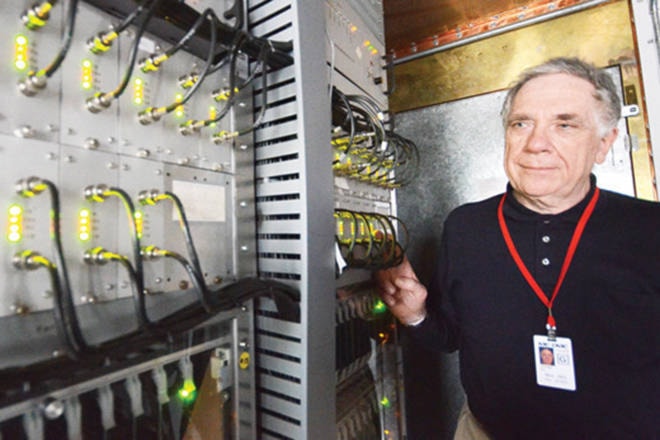In October 2018 an important new astronomical instrument is scheduled for launch.
The , the successor to the Hubble Space Telescope, will be a primary research tool for at least a decade. This instrument is an international collaboration by NASA, the European Space Agency, the Canadian Space Agency and other countries. It is part of a succession of instruments being put into space to observe emissions from the cosmos that do not reach the ground, or to bypass atmospheric distortions. These include X-rays and other high-energy radiations produced by the more dramatic astronomical events, such as stars being swallowed by black holes. If these radiations reached the ground they would be deadly to life.
Our ability to develop sophisticated; reliable and affordable astronomical instrumentation for deployment in space comes from decades of work. Since the beginning of the space age in October 1957, thousands of satellites have been launched. Initially they were intended for research, but gradually commercial applications became more viable so that today the use of satellites for communication, broadcasting and other services far exceeds science applications. Today there are proposals to launch networks of thousands of satellites to provide global broadband Internet. However, our extensive experience has come at a cost, a growing problem with space junk.
When satellites are launched, they are accompanied into orbit by assorted adapter rings, fairings, nuts and bolts and usually the last stage of the launch vehicle. These join the satellites in orbiting the Earth at speeds in the region of 30,000 kilometres per hour. When these satellites eventually fail, replacements are launched, and the dead satellites join the space junk. Any liquid fuels left in the orbiting parts of launch vehicles slowly evaporate and may cause the vehicle to explode, creating lots more bits of metal, ceramic and other materials: all contributions to the space junk. Today the problem is assessed at roughly 5,000 objects with sizes larger than one metre, roughly 20,000 objects with sizes over 10 centimetres … and 750,000 ‘flying bullets’ of around one centimetre. The smaller fragments probably number in the millions. A piece of material 5mm in diameter, impacting a satellite at 30,000 km/h could destroy it, or kill an astronaut. The question is what can we do about it?
Fortunately, junk fragments in low orbit, taking 90 minutes or so to orbit the Earth are likely to eventually enter the atmosphere and burn up. Things in higher orbit may stay there for decades or indefinitely. At the moment we have no practical method to deal with this. No big catcher’s mitt will stop a small nut moving at eight kilometres a second. We would have to rendezvous with each bit, match speeds, grab the item and then move on to the next one. At the moment we have no capability to do this. Even if we stopped adding more, the existing space junk fragments would continue to collide and make more small debris. However, not deliberately adding more would be a good start. There is a growing effort to deorbit dead satellites and minimize the amount of other stuff that goes into orbit along with the satellites.
On the plus side, there is a powerful incentive to find effective means to deal with space junk. It comes from our desire to protect our investment in space, either in commercial services or state-of-the art scientific instruments. All homeowners know how much our backyards say about us. What does our space backyard say about us? We now know we have made a real mess, and realizing that is an important step towards dealing with it.
Top of FormJupiter rises soon after dark and Saturn in the early hours. Venus lies low in the dawn glow. The Moon will be New on the April 26.
Ken Tapping is an astronomer with the NRC’s Dominion Radio Astrophysical Observatory, Penticton.



